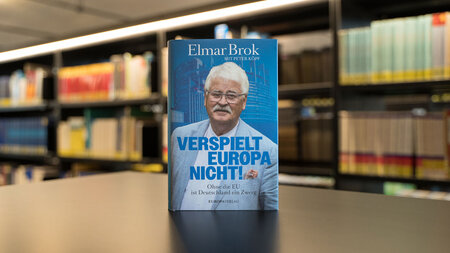Plasma electrolytic oxidation (PEO)
Plasma electrolytic oxidation (PEO) is a wet-chemical surface treatment process for creating ceramic protective and functional layers on metallic surfaces. The component to be treated undergoes strong anodic polarisation within an aqueous electrolyte, which leads to the formation of an electrically insulating reaction layer on the metal surface and a gas/vapour zone surrounding the component geometry. Its interface to the bulk electrolyte becomes the starting point for plasma-electrolytic discharge phenomena, which strike from the electrolyte into the substrate and leave oxidised focal spots there. As the process continues, oxide formation and melting and remelting processes result in the formation of a ceramic layer whose technological properties can be varied within wide limits. In order to prevent the transition from short-lived, layer-forming spark discharges to long-lived, layer-destroying arc discharges, pulsating or alternating electrical regimes are generally used. Depending on whether the layer is formed by substrate conversion or the targeted incorporation of electrolyte components, the layer composition is dominated by intrinsic compounds of the substrate metal or oxidised electrolyte species. Varying the substrate material, electrical regime and electrolyte composition results in an immense variety of parameters, which is further enhanced by interactions with the device-specific rectifier control behaviour. [1]
General view of the plant:

Technical equipment
By company OTE Surface & Electrical Engineering Scheigenpflug Installed system
- two tanks on a pilot plant scale with electrolyte cooled directly via a heat exchanger and dimensions of 350 × 400 × 250 mm³ and 230 × 200 × 250 mm³ respectively
- Possibility to carry out experiments on a laboratory scale and small electrolyte volumes in indirectly cooled containers

Rectifier from the company plating electronics
- Type pe86CW-550-53-120/S with up to 550 V rms voltage and 50 A rms current
- Type pe861UA-500-10-24-S with up to 500 V rms voltage and 10 A rms current
- Ability to map complex current and voltage-controlled electrical regimes
- Time scaling of the pulse geometries in the single-digit ms range
Transient recorder from Yokogawa
- Type ScopeCorder DL950
- Various measuring cards for recording electrical and photoelectric signals with sampling rates in the MS range
- Electrolyte bath temperature monitoring

High-speed camera from Baumer , procured via Imaging Solutions
- Type VLXT-06M.I
- Resolution of 800 × 620 pixels, pixel size 9 × 9 µm²
- Frame rates of 1578 fps, higher values with a smaller recording field

Raspberry with camera module
- Raspberry Pi 4 in Argon ONE V2 housing
- RB-CAMERAHQ RASP CAM HQ CMOS colour camera module

optical emission spectrometer (OES) from OceanOptics
- Type OCEAN-HDX-XR
- Analysis of spectral process information of the emitted luminous phenomena from UV to NIR range
- Determination of plasma temperature, element content and element-specific atom/ion ratios of the integral discharge process
Multi-parameter measuring system for electrolyte monitoring of Meinsberg
- Type KM 3000
- Measurement of pH value and electrical electrolyte conductivity
- Optional extension for ion-selective electrodes

Control unit for synchronising the electrolyte and process diagnostic elements
- WOT in-house development
Selected publications on PEO at our professorship:
-
F. Simchen, T. Mehner, T. Lampke.
New ways of depositing ceramic coatings
, ZVO Report 01/2024
https://www.zvo.org/publikationen/zvoreport/zvoreport-archiv -
F. Simchen, M. Sieber, I. Scharf, T. Lampke.
Electrolyte Influence on the ignition of plasma electrolytic oxidation processes on light metals.
Surface and Coatings Technology 315, 2017, 205-213.
https://doi.org/10.1016/j.surfcoat.2017.02.041 -
M. Sieber, F. Simchen, R. Morgenstern, I. Scharf, T. Lampke.
Plasma electrolytic oxidation of high-strength aluminium alloys-substrate effect on wear and corrosion performance.
Metals 8 (5), 2018, 356.
https://doi.org/10.3390/met8050356 -
F. Simchen, M. Sieber, A. Kopp, T. Lampke,
Introduction to Plasma Electrolytic Oxidation-An Overview of the Process and Applications.
Coatings 10 (7), 2020, 628.
https://doi.org/10.3390/coatings10070628 -
F. Simchen, M. Sieber, T. Mehner, T. Lampke,
Characterisation Method of the Passivation Mechanisms during the pre-discharge Stage of Plasma Electrolytic Oxidation indicating the Mode of Action of Fluorides in PEO of Magnesium.
Coatings 10 (10), 2020, 965.
https://doi.org/10.3390/coatings10100965 -
F. Simchen, N. Masoud-Nia, T. Mehner, T. Lampke,
Formation of corundum-rich alumina coatings on low-carbon steel by plasma electrolytic oxidation. IOP Conference Series: Materials Science and Engineering 2021.
https://doi.org/10.1088/1757-899X/1147/1/012007 -
F. Simchen, R. Morgenstern, S. Clauß, T. Lampke,
Dissolution Behaviour of Different Alumina Phases within Plasma Electrolytic Oxidation Coatings.
Coatings 12, 2021, 1205
https://doi.org/10.3390/coatings12081205 -
F. Simchen, T. Mehner, T. Lampke,
Specification of parasitic electrochemical subprocesses during plasma electrolytic oxidation of magnesium,
Electrochimica Acta 464, 2023, 142858
https://doi.org/10.1016/j.electacta.2023.142858





